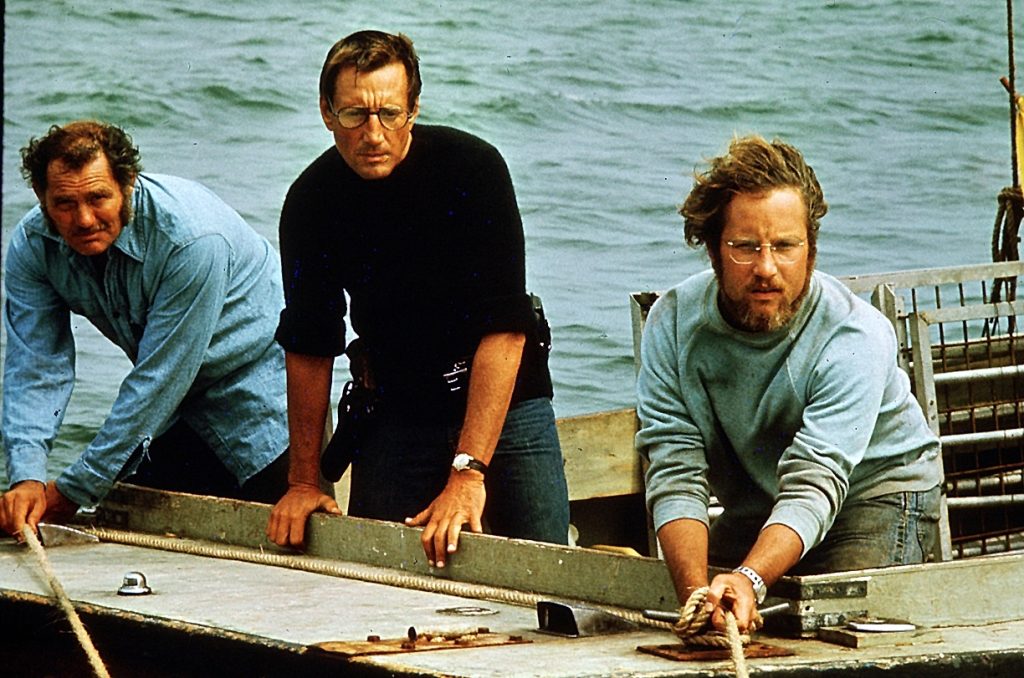Jaws Everyone’s favorite beach movie, this Steven Spielberg classic stars Roy Scheider, Robert Shaw, Richard Dreyfuss, and The Shark. The summertime thriller about a great white shark attacking beachgoers at a summer resort town, was based on the novel by Peter Benchley, who also co-wrote the screenplay with Carl Gottlieb. Benchley was inspired by several real-life incidents in writing his novel Jaws, such as the 1916 Jersey shore attacks that left four people dead over the course of twelve days. Paul Newman, Steve McQueen, and Robert Redford were originally considered for the leading roles, but producer David Brown knew the movie required no stars: “The star of this movie was a fish.” The ominous music by John Williams also contributed in no small measure to the great success of the film.
The film was shot on location at Martha’s Vineyard, chosen because the surrounding ocean had a sandy bottom that never dropped below 35 feet for 12 miles out from shore, which allowed the mechanical sharks to operate while also beyond sight of land. New equipment was developed to facilitate marine and underwater shooting, including a rig to keep the camera stable, regardless of tide, Spielberg asked the art department to avoid red in both scenery and wardrobe, so that the blood from the attacks would be the only red element and cause a bigger shock.
Shooting at sea led to many delays: unwanted sailboats drifted into frame, cameras got soaked, and the Orca once began to sink with the actors on board. The prop sharks frequently malfunctioned owing to a series of problems including bad weather, pneumatic hoses taking on salt water, frames fracturing due to water resistance, and corroding skin. Gottlieb was nearly decapitated by the boat’s propellers, and Dreyfuss was almost imprisoned in the steel cage. The actors were frequently seasick. Spielberg later calculated that during the 12-hour daily work schedule, on average only four hours were actually spent filming.
The delays proved beneficial in some regards. The script was refined during production, and the unreliable mechanical sharks forced Spielberg to shoot many scenes so that the shark was only hinted at. This forced restraint is widely thought to have added to the film’s suspense. As Spielberg put it years later, “The film went from a Japanese Saturday matinee horror flick to more of a Hitchcock, the less-you-see-the-more-you-get thriller.”

![May 23 Jaws[1]](https://ogunquitperformingarts.org/wp-content/uploads/2023/03/May-23-Jaws1.jpg)